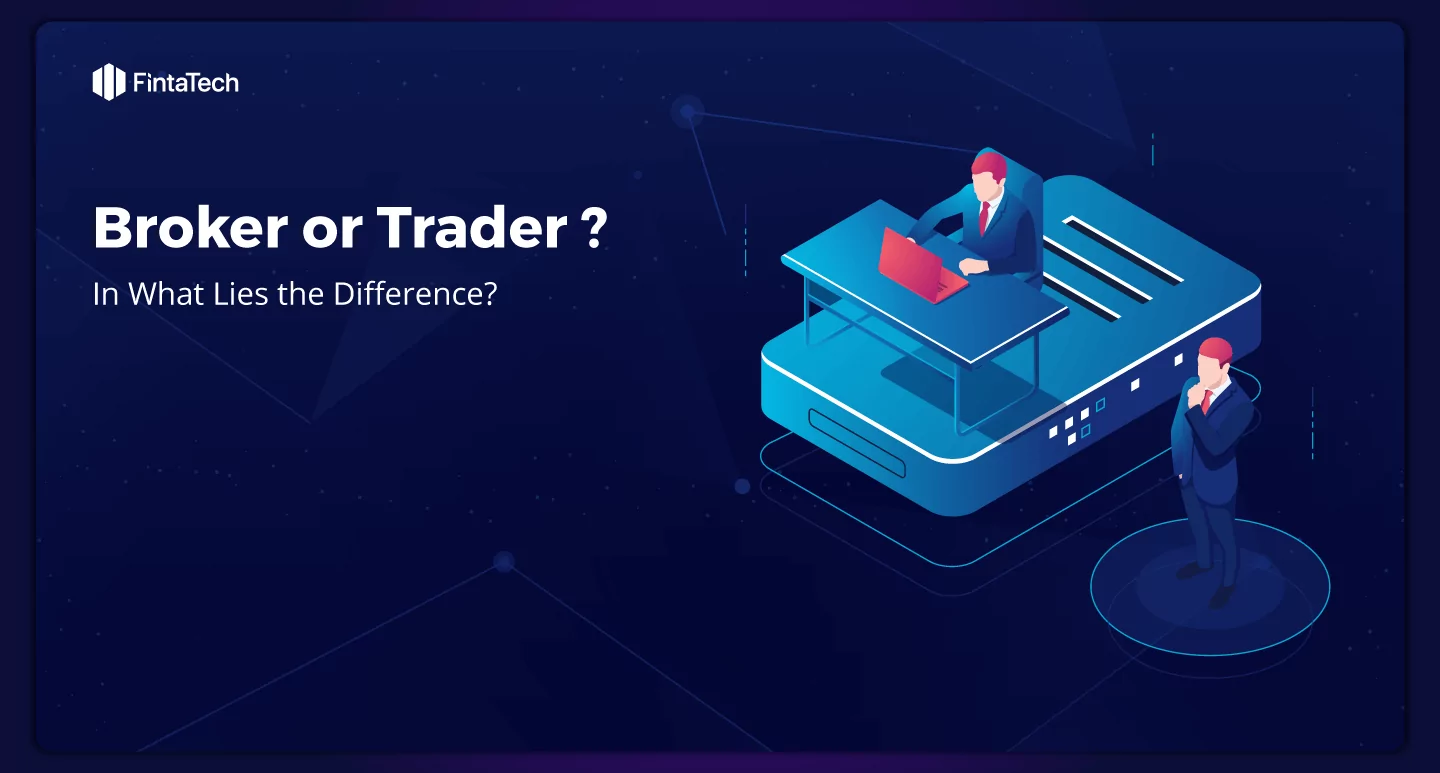The world of financial markets is constantly filling up with new tools and professional trading terminals that combine many useful features. So you have to be in the loop of all the events that may affect the business environment as well as be able to read charts, analytical reports and catch trends.
Of course, if you want to invest in as stocks, foreign currencies or cryptocurrencies, vast knowledge, experiences and often luck needed.
But how can a newbie trader start making profits instead of losing money when they are just at the beginning of their career?
Perhaps, one might try copying others, most experienced and successful market players.
And here comes Social trading, a form of investing that allowed experienced traders to share their knowledge and actions on the market easily with a huge online community and others to copy those actions.
Such kind of trading has let users analyze data in a new way, compare and copy trades and strategies of successful investors. Social Trading bears itself almost the same idea as social networks we are so in love with. But instead of posting selfies or travel pics, people on a trading network share ideas. This is the place where traders cooperate, analyze results of other professionals and brainstorm on market new in real-time.
How did it start, though? What has sparked the idea to unite financial environment with the social one? Let’s step back and learn a short story of how ST came into our lives.
Story Behind Social Trading: Mirror & Copy Trading
As you know there are lots of different investment instruments used by traders today, and Social trading is considered as one of the latest generation form of investment. It’s appeared thanks to Web 2.0 and allowed market participants (even beginners) to copy pro investors strategies inside a network.
The phenomenon of Social Trading was preceded by Mirror and Copy Trading. But even before that, there were simple emails.
Yes, there were times when some traders told their followers about their intention to open or close particular operation at a particular level via newsletters.
Later on, instead of writing emails about the execution of a trade, a trader would write about it in a special trading room, where followers were able to read it and copy it. Then, with the chatting rooms progressing, users were also able to make a comment or ask questions live.
The pioneer of implementing ST trend to the financial area was Tradency company. They were the first who offered an auto trading system known as Mirror Trader. How did it work?
If a trader provides with his strategy’s performance of quite a long period, he could host it on the Tradency systems. This way, if it was accepted by the system, the Tradency customers could watch the results of such strategy and if like it, could make a choice to mirror-copy all the operations from this strategy to their trading account.
Other significant innovation in the Social Trading world were made by companies ZuluTrade and Etoro. These guys made it possible for traders to just connect their personal account to the platform without a need to submit their strategies to be approved. And, therefore, all the actions were recorded and available for users to monitor and consult.
The new system created by Tradency let investors observe and analyze the performance and history of any trader inside the platform and if interested, to copy the transactions made by a certain trader to the account. Here comes Copy Trading.
And then community pushed the questions: why not letting investors involved in Copy Trading to communicate with each other, to share ideas and opinions, to comment on trader’s actions and rate him? Why not take Social Network and to connect it to the Copy Trading logic?
And this is how Social Trading came into being.
What is So Cool in Social Trading
So now we know a bit of ST history and ready to check what is so fancy in such kind of internet activity over traditional trading.
Social trade environment allows anyone even with minimum knowledge of market to make adecision based on other more skilled investors content collected from different trusted platforms. To put it simply, after some research and monitoring you pick successful traders with a strategy you like, start following them and copy their trades.
Let’s cut to the chase though. Here are some benefits you can learn about Social Trading:
- Fast and easy access to reliable market data
Professional traders across the globe share the detailed insights through ST platforms for you to cut down the process of reliable information search. With some platforms, you are able to interact with the experienced traders behind the scenes.
- Quick market penetration
In line with the above, ST platform can become your top help-mate of quickly becoming a professional investor by allowing you to efficiently grow along with sophisticated investors.
- Learning & Earning
It’s quite a good opportunity for you to learn from skilled investors how to not get lost in the market while raising some money by copying their trades. Therefore, no need to wait long until you gain all the necessary know-how to start earning on your own.
- Becoming a part of investors trading community
Social trading is the world where traders and investors hang out: they interact, share ideas and information as well as collaborate on different ventures. Being a part of it, you can access this valuable information easily from any point of the world! (where the internet exists, of course).
So, the main idea here is that Social Trading is your best guide to learn the market environment by the means of copying trades of top investors.
But are there any factors that undermine ST results? Let’s check it out.
Major Factors that Undermine Social Trading Success
Now, let’s learn the main issues that get in the way of successful trading and the tips helping to overcome these obstacles.
- Unrealistic expectations. Most people tend to think that “social trading” or “copy trading” is a simple way to make big gains with small investments. For example, when you see the results of the top-rated trader, the historical ROI can be over 100%. Thus, people expect to also have such exceptional results, but one should realize one golden rule: by magnifying potential profit you are also magnifying potential losses.
- Limited investments. You already know that any commission-worth financial advisor will recommend diversifying your investments. It’s all the same with social trading. Distributing your investments between several traders will significantly reduce general risk.
- Lack of efforts. It is a common real-life true that the more efforts you invest in something, the better you are at it. Social and Copy Trading are no exception.
TIP:
- Learn the fundamentals of Forex and leverage trading;
- Use Demo account when learning Social trading platform;
- Analyze the trader’s activity before following and copying his trades;
- Monitor your performance and improve portfolio;
- Follow market news
4. Bad risk management. First step against poor risk management & large losses is using demo-account that many modern Social trading platforms offer at least for limited periods. If you feel shaky at making decisions then follow your demo account movements and monitor your investment fluctuations every day.
5. Impatience. Quite a lot of people who got into ST want to see the traders they follow and copy make winning trades only. But it doesn’t work like that. Even the most kick ass traders sometimes lose, just because losses are an inevitable part of a game. Any trader needs some time to prove his strategy, so take it into account while conducting research.
The risk of drawdown is natural and individual for each trader or system. Just check the given trader’s strategy basics and tweak it out yourself.
So, we observed the most painful moments that could put a crimp in ST performance but don’t forget also, that any business can be risky.
Behind the Mirror: How Else Can One Earn with Social Trading Platform?
So, here are few ST highlights pointing that it is:
- relatively new and universal kind of trading;
- attracting many new investors;
- becoming a more popular way for beginners to learn to trade professionally.
Those who have business-like thinking and want to do something more beyond just trading through Social trading platforms can make a profit in the light of its popularity. You can earn money by trading, but you can make a buck by owning a platform.
Social trading platforms have become in considerable demand within the last years and the number of new ones on the market is growing. Still, there are few of them deserving attention and precious time.
Such popular ST platforms like eToro, ZuluTrade or Tradeo are pretty examples of what true ST platform should look like, but many entrepreneurs fail to develop a really well-performing service that would attract users. They simply rush to make big money ignoring the most important things when crafting the product.
Still, the whole idea of developing own Social trading platform is financially promising and here why:
- such platforms are well-suited for trading training which means high customer traffic expected;
- many beginners are afraid to make own decisions, meaning they will likely invest relying on the experts’ decision;
- the experts themselves make money on their followers, so that helping promote your platform and becoming brand ambassadors;
- ST platforms reduce the likelihood of screwing up due to general concept of observe-analyze-do;
Below you can see the table with the features review of the trending ST platforms. Such pros & cons comparison shows that even these high-rated platforms are far from providing perfect service.
Quick Overview of Popular Social Trading Platform
Below is a table with pros and cons for the top 5 trading social networks based on real user experience. Sure thing there are many more Social trading platforms in the digital world, but they all have many common features:
| Platform name |
+ |
– |
| Zulutrade |
|
|
| eToro |
|
|
| Ayondo |
|
|
| Tradeo |
|
|
| Tradency Mirror Trader |
|
|
So, basically, what we’ve learned from this short review?
Among the most needed features for users are:
- ability to try own forces in ST with the help of demo account;
- ability to view historical performance of a “trading guru” for offline analysis;
- low entry cost;
- good risk & money management;
- good customer support;
- ability to manage account in multiple currencies
These are the must-have features a competitive ST platform should have but certainly not the only ones. When developing such a complex product, a comprehensive research should be done that takes into account both industry standards and target audience preferences.
Moreover, it’s important to prioritize each piece of functionality development to move leanly from social trading platform MVP to a full-fledged product.
All that is something you, as an entrepreneur, need help with from a qualified R&D team that has practical knowledge and experience dealing with all technical and business aspects of starting a brokerage.
Fintatech team has all of that. We’re a company with more than 13 years of experience in researching, building and delivering state of the art web-based trading software products of various scope and complexity.
Being at the point we’re now, Fintatech team possess the technology and resources to bring to life your own social trading platform on the basis of our Trading Platform Designer solution. Having a solid flexible platform core on our hands, we’re capable of delivering the desired qualitative product with minimal time-to-market and financial expenses.
Want to learn more? Just drop us a line at support@staging.fintatech.com and we’ll arrange a quick 1 on 1 Trading Platform Demo for you.






Twitter
Linkedin
Facebook